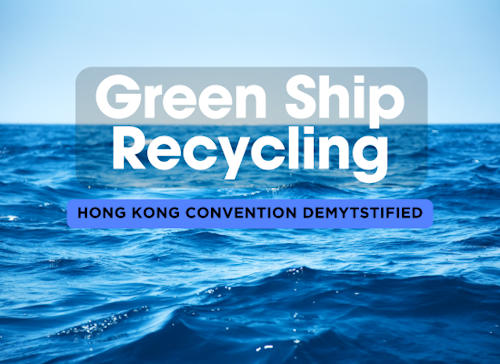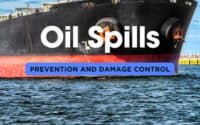Hong Kong Convention Demystified: A Practical Guide to Green Ship Recycling

Navigating the complexities of ship recycling has become increasingly crucial for ship owners as environmental regulations tighten across the globe. The Hong Kong International Convention for the Safe and Environmentally Sound Recycling of Ships, known simply as the Hong Kong Convention, sets the international standard for recycling ships in a manner that protects both human health and the environment. As this convention gains traction worldwide, ship owners must understand its requirements and how to comply effectively. This guide provides practical insights and resources, including certified recycling facilities, cost-benefit analyses, and compliance strategies, ensuring that your ship recycling process is both compliant and efficient.
** Please fact check data as there may be inaccuracies and these figures can change over time. Please send comments / suggestions to editor @ shipuniverse.com **
Understanding the global landscape of ship recycling is essential for making informed decisions. This table provides a snapshot of the leading ship recycling countries, highlighting their compliance with the Hong Kong Convention and the availability of certified facilities. It offers valuable insights for ship owners looking to responsibly recycle their vessels.
| ShipUniverse: Comparison of Major Ship Recycling Countries and Their Compliance with (HKC) | ||||
|---|---|---|---|---|
| Country | Status of Hong Kong Convention Ratification | Number of Certified Recycling Yards | Key Environmental and Safety Regulations | Average Cost of Recycling (USD) |
| India | Ratified | 92 | Compliance with Supreme Court guidelines; Occupational Safety Standards | $300-$400/ton |
| Bangladesh | In Progress | 20 | National Policy for Shipbreaking; Environmental Impact Assessments | $250-$350/ton |
| Pakistan | Not Ratified | 10 | Minimal regulatory oversight; Some adherence to ILO guidelines | $200-$300/ton |
| Turkey | Ratified | 22 | Strict adherence to EU and IMO standards; Environmental management systems in place | $350-$450/ton |
| China | Ratified | 100+ | Comprehensive national regulations; Advanced waste treatment facilities | $400-$500/ton |
Complying with the Hong Kong Convention involves adhering to several key requirements designed to ensure safe and environmentally sound ship recycling. This table outlines some of these critical requirements, including the necessary steps for compliance, estimated costs, and potential challenges that ship owners might face.
| ShipUniverse: Key Requirements of the Hong Kong Convention | ||||
|---|---|---|---|---|
| Requirement | Description | Compliance Steps | Estimated Cost | Potential Challenges |
| Inventory of Hazardous Materials (IHM) | Ships must maintain an inventory of all hazardous materials onboard. | Survey and document all materials; Update inventory regularly. | $10,000-$30,000 | Costly and time-consuming for older ships. |
| Certified Recycling Facilities | Ships must be recycled at facilities certified to handle hazardous materials safely. | Select a certified yard; Ensure proper documentation and certification. | Varies by location and yard capacity. | Limited availability of certified facilities. |
| Ship Recycling Plan (SRP) | Develop a plan that outlines how the ship will be dismantled and recycled. | Work with a certified recycling yard to create a compliant SRP. | $5,000-$15,000 | Requires close collaboration with the recycling yard. |
| Safe Working Conditions | Ensure the health and safety of workers involved in the recycling process. | Implement safety protocols; Provide training and PPE. | $5,000-$20,000 | Enforcing compliance in countries with weaker regulations. |
An Inventory of Hazardous Materials (IHM) is a mandatory component of compliance with the Hong Kong Convention. This table identifies the most common hazardous materials found on ships, their typical locations, associated risks, and safe disposal methods, helping ship owners prepare for recycling in a responsible manner.
| ShipUniverse: (IHM) - Common Hazardous Materials Found on Ships | ||||
|---|---|---|---|---|
| Material | Location on Ship | Potential Hazards | Safe Disposal Methods | Regulatory Requirements |
| Asbestos | Engine room, insulation, piping | Carcinogenic; respiratory issues | Sealed removal and disposal at certified hazardous waste facility | Strict regulation under international conventions; requires IHM documentation |
| Polychlorinated Biphenyls (PCBs) | Electrical equipment, cables, transformers | Carcinogenic; toxic to environment | Incineration at high temperatures in licensed facilities | Banned or restricted use in most countries; must be identified in IHM |
| Heavy Metals (e.g., lead, mercury) | Batteries, paints, ballast water tanks | Neurotoxic; environmental contamination | Recycling or disposal at hazardous waste facilities | Strict disposal requirements under MARPOL and other conventions |
| Ozone-Depleting Substances | Refrigeration systems, fire extinguishing systems | Contributes to ozone layer depletion | Recovery and destruction in certified facilities | Subject to phasing out under international agreements; must be recorded in IHM |
| Hydrocarbons | Fuel tanks, bilge water, lubricants | Fire hazard; environmental pollution | Recycling or disposal through certified waste management companies | Controlled under MARPOL Annex I; needs careful handling and disposal |
Choosing the right ship recycling facility is crucial for compliance with the Hong Kong Convention. This table lists certified ship recycling facilities across major recycling countries, providing details on their certification status, capacity, and services offered, enabling ship owners to make informed decisions about where to recycle their vessels.
| ShipUniverse: List of Certified Ship Recycling Facilities | ||||
|---|---|---|---|---|
| Facility Name | Location | Certification Status | Capacity (DWT) | Key Services Offered |
| Leela Ship Recycling | Alang, India | Certified under Hong Kong Convention | 1,000,000 DWT | Complete recycling, hazardous material management |
| Gadani Shipbreaking Yard | Gadani, Pakistan | Not Certified | 500,000 DWT | Scrapping, basic waste management |
| Smedegaarden | Esbjerg, Denmark | Certified under EU Ship Recycling Regulation | 200,000 DWT | Decommissioning, green recycling, hazardous waste handling |
| Aliaga Ship Recycling | Aliaga, Turkey | Certified under Hong Kong Convention | 800,000 DWT | Comprehensive recycling, environmental management |
| China National Ship Recycling Co. | Shanghai, China | Certified under Hong Kong Convention | 2,000,000 DWT | Complete recycling, hazardous material management |
Investing in compliance with the Hong Kong Convention can have significant long-term benefits for ship owners. This table provides a cost-benefit analysis of the key factors involved in compliance, illustrating how initial costs can lead to savings and advantages over time, both financially and environmentally.
| ShipUniverse: Cost-Benefit Analysis of Complying with the Hong Kong Convention | |||
|---|---|---|---|
| Cost Factor | Estimated Cost Range (USD) | Benefit | Long-Term Savings |
| Inventory of Hazardous Materials (IHM) | $10,000 - $30,000 | Ensures compliance, reduces environmental and health risks | Avoids fines, reduces potential liability costs |
| Using Certified Recycling Facilities | $300 - $500 per ton | Complies with international standards, supports worker safety | Potentially higher scrap value, lower insurance premiums |
| Ship Recycling Plan (SRP) | $5,000 - $15,000 | Structured and compliant recycling process | Minimizes risks of non-compliance, avoids delays in decommissioning |
| Training and Safety Protocols | $5,000 - $20,000 | Improves worker safety, reduces accident risks | Lowers long-term insurance and liability costs |
| Environmental Management Systems | $15,000 - $50,000 | Reduces environmental impact, enhances corporate reputation | Potentially lowers environmental taxes and improves brand value |
Navigating the green ship recycling process requires careful planning and execution. This table offers a step-by-step guide to recycling a ship in accordance with the Hong Kong Convention, detailing the key actions, timelines, and resources needed at each stage, ensuring a smooth and compliant recycling process.
| ShipUniverse: Step-by-Step Process for Green Ship Recycling | ||||
|---|---|---|---|---|
| Step | Description | Key Actions | Timeframe | Resources Needed |
| 1. Inventory of Hazardous Materials (IHM) | Document and assess hazardous materials on board | Conduct a survey, prepare IHM documentation | 1-2 months | Certified hazardous material surveyor, documentation tools |
| 2. Selection of Recycling Facility | Choose a certified yard that complies with the Hong Kong Convention | Evaluate facilities, verify certification, negotiate contracts | 1-2 months | Facility certifications, legal and negotiation team |
| 3. Develop Ship Recycling Plan (SRP) | Create a detailed plan for safe and compliant recycling | Collaborate with recycling yard, draft SRP | 2-4 weeks | Environmental consultant, legal team |
| 4. Decontamination and Preparation | Remove hazardous materials and prepare ship for recycling | Decontaminate, remove oils, prepare structure | 2-3 months | Specialized cleaning teams, decontamination equipment |
| 5. Recycling and Dismantling | Execute the recycling process according to the SRP | Monitor operations, ensure compliance with SRP | 3-6 months | On-site supervisors, compliance auditors |

Do you have a Maritime Product or Service that may be of interest to Shipowners? Tell us about it here!
Do you have feedback or insights? Please reach out to editor @ shipuniverse.com



